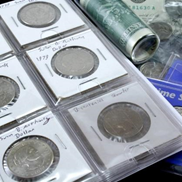
Well someone did for over $7 million USD. This 24x24 pixel art is a CryptoPunk, one of 10,000 unique collectible pieces of art stored as a Non Fungible Token (NFT) on the Ethereum blockchain. CryptoPunks was created in 2017 by Larva Labs and two Canadians, Matt Hall and John Watkinson. The project was the first of its kind and is similar to the likes of trading & collecting unique stamps, shiny new coins, or rare sports cards.
Although the CryptoPunks project was created years ago, the recent craze in NFTs has led to mainstream adoption by large organizations such as NBA Top Shotand Gary Vee’s VeeFriends.
What is a Non-Fungible Token (NFT)?

A Non-Fungible token is a digital “token” in the form of computer code that represents the ownership of a digital piece of art, such as the CryptoPunk above. Holding a token provides proof of ownership that the holder owns the digital asset. The owner of the token can also place itup for auction or resell it to anyone willing to buy it.
Fungibility is a property of an asset where its units are interchangeable, like dollars, a bar of gold, and even Bitcoin. Non-fungible means an asset is unique and cannot be copied or duplicated. Non-fungible tokens have their own properties and characteristics, like an autographed sports trading card, but exist digitally instead of physically. Each of the 10,000 CryptoPunks created has their own combination of unique attributes, such as hair colour, hats, and glasses. But what gives an NFT like a CryptoPunk a whopping multi-million dollar valuation? Couldn’t each image just be duplicated and resold?
How does a Non-Fungible Token Work?

To understand Non-Fungible Tokens, we must first understand what blockchain is. Blockchain enables NFTs to be created, sold, and moved around seamlessly through the internet.
In simple terms, a blockchain is a database that records the transactions of a digital asset, like a token, between user accounts. This is similar to a centralized banking system where your account balance and transactions are recorded and kept in check on a bank’s internal database.
Unlike a traditional database, blockchain records are distributed across multiple, anonymous computers, that each keep a copy of all transactions. Transactions on the blockchain are permanent and cannot be deleted because every computer has an identical copy of records, providing a single source of truth.
Each transaction can be viewed publicly on a blockchain explorer. The blockchain explorer shows how transactions move between accounts and what digital asset each account is holding. However, the user of an account always remains anonymous because accounts are represented by a unique 42 alphanumeric string of characters instead of a user-identifiable property like a name.
NFTs, like CryptoPunks, use blockchain technology to be traded among users on the Ethereum blockchain (the second largest blockchain out of many others). NFTs can be “minted” on a blockchain using smart contracts. Smart contracts are lines of code and rules that interact with the blockchain to perform a specific task like creating an NFT. When an NFT is created, the digital token permanently lives on the blockchain and can be traded to anyone willing to buy it.
Similar to physical collectibles, the value of a token is based on what the next person will pay for it. It is perhaps the combination of a blockchain’s ability to verify the originality of a token and the bragging rights of owning a piece of the very first NFT project on the Ethereum blockchain that justifies the multi- million dollar valuation of a CryptoPunk.
Fun Fact: Did you know each CryptoPunk was originally free when created? You were only required to have an Ethereum wallet pay a small network fee to claim each Punk.
How do I create an NFT?
Luckily, you do not need to be a developer to use smart contracts. Multiple platforms like OpenSea,Rarible, andMintable let anyone upload a picture, GIF, or video to turn their artwork into an NFT. However, a digital wallet is required in order to upload an NFT to a blockchain. A digital wallet is a virtual account that holds your token and provides access to the blockchain.
Creating an NFT does come with a cost however, because executing a smart contract to interact with the blockchain requires “gas”. Gas is a transaction fee paid to the network to create your NFT on the blockchain. To use the Ethereum blockchain, it’s native cryptocurrency ETH, is required to mint an NFT.
Where are NFTs headed?
What started as a simple collectibles project to mainstream adoption by large corporations, NFTs are definitely here to stay. Blockchain has created an exciting new way for anyone to create their own artwork that is one-of-a-kind, easily authenticated, and tradable. Maybe you could sell yours for $7 million someday?